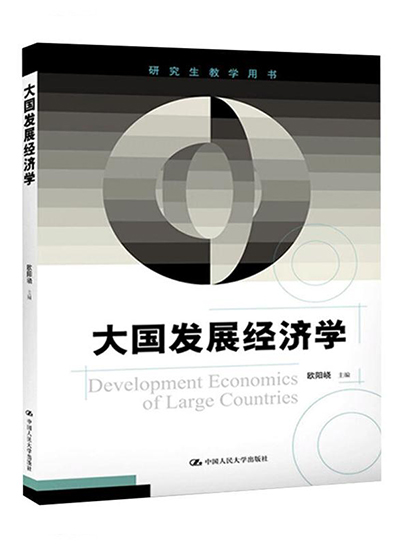Scale key to interpreting development of large countries

Development Economics of Large Countries
Since the late 20th century, emerging countries such as China have achieved rapid and sustained economic growth. In this context, academic circles have attempted to explain this important economic phenomenon from different perspectives, such as comparative advantage and late-comer advantage. In practice, it was not one single factor, but comprehensive factors that promoted the rapid economic development of these countries. In addition to comparative advantage and late-comer advantage, the size of a country is an important influencing factor.
Co-authored by an academic team led by Ouyang Yao, vice president and professor of Hunan Normal University, Development Economics of Large Countries defines the concept of large developing countries, selects 13 emerging countries (including China) as specific research objects, reveals economic features and abstracts economic theories for these countries, proposes corresponding strategies for development, and forms the theoretical prototype for the development economics of large countries.
According to the book, scale is a core feature of a large country's economy, and the key to understanding its economic advantages. Meanwhile, multiple structures are an iconic feature of a large developing country's economy, and the key to interpreting its economic transformation.
From the diverse characteristics which might define large countries and their economies, the book takes population sizes and land areas as the two initial characteristics. Then further features are deduced, including the market scale and endogeneity, the heterogeneity and appropriateness of factor endowments, the multiformity and hierarchy of economic structures, the integrity and independence of industrial structures, the differences and complementarity of regional economies, and the stability and sustainability of economic development.
The book regards scale and multiformity as the two basic characteristics of a large country's economy. Scale not only means the huge overall scale of a large country's economy, but also the huge scales of factors of production, markets, and industries. Multiformity refers to the multilayered structures formed by differences in technology, industry, region, and urban-rural development within a large country.
When excavating universal economic laws from large countries' development experiences, the book proposes a theory regarding the endogenous capability and comprehensive advantages of large countries. The former refers to the fact that super large-scale countries can achieve independent and coordinated development due to their rich domestic resources and broad market scope. The latter means that super large-scale countries can form a comprehensive advantage that assembles various advantageous resources and integrates these advantages, benefiting from multiformity and conditions specific to large countries.
Fang Fuqian is a professor from the School of Economics at Renmin University of China.
Edied by YANG LANLAN
